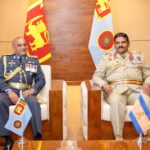The speed of the Taliban advance in Afghanistan appears to have taken many by surprise – regional capitals seem to be falling like dominoes.
The momentum is clearly with the insurgents, while the Afghan government struggles to keep its grip on power.
This week, one leaked US intelligence report estimated that Kabul could come under attack within weeks, and the government could collapse within 90 days.
So how did it unravel so quickly?
The US and its Nato allies – including the UK – have spent the best part of the last 20 years training and equipping the Afghan security forces.
Countless American and British generals have claimed to have created a more powerful and capable Afghan army. Promises that today appear pretty empty.
The Afghan government should, in theory, still hold the upper hand with a larger force at its disposal.
The Afghan security forces number more than 300,000, on paper at least. That includes the Afghan army, Air Force and police.
According to the US Combating Terrorism Center at West Point, estimates suggest a core strength of 60,000 fighters. With the addition of other militia groups and supporters, that number could exceed 200,000.
But Dr Mike Martin, a Pashto-speaking former British army officer who tracked the history of the conflict in Helmand in his book An Intimate War, warns of the dangers of defining the Taliban as a single monolithic group.
Instead he says “the Taliban is closer to a coalition of independent franchise holders loosely – and most probably temporarily – affiliated with one another”.
He notes the Afghan government, too, is as riven by local factional motivations. Afghanistan’s shape changing history illustrates how families, tribes and even government officials have switched sides – often to ensure their own survival.
Access to weapons
Again, the Afghan government should have the advantage in terms of both funding and weapons.
It has received billions of dollars to pay for soldiers’ salaries and equipment – mostly by the US. In its July 2021 report, SIGAR said more than $88bn (£64bn) had been spent on Afghanistan’s security.
But it ominously added: “The question of whether that money was well spent will ultimately be answered by the outcome of the fighting on the ground.”
Afghanistan’s Air Force should provide it with a critical edge on the battlefield.
But it has consistently struggled to maintain and crew its 211 aircraft (a problem that’s becoming more acute with the Taliban deliberately targeting pilots). Nor is it able to meet the demands from commanders on the ground.
Hence the involvement recently of the US Air Force over cities like Lashkar Gah, which have come under Taliban attack. It’s still not clear for how much longer the US is willing to provide that support.
Courtesy: bbc.com/news











